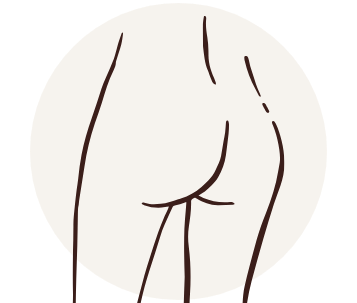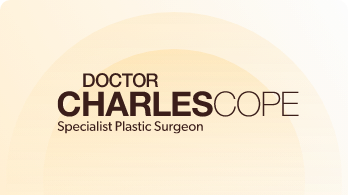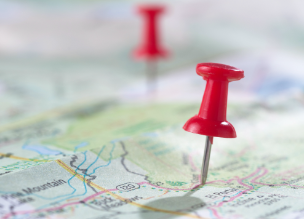A buttocks lift using fat transfer (Brazilian Butt Lift Surgery, BBL surgery or bilateral buttock augmentation) aims to increase the size of the buttocks. It uses fat grafting to alter the volume in this area based on the patient’s cosmetic goals.
This technique is useful if there is only a small amount of skin laxity, and there are sufficient fat deposits elsewhere on the body (such as on the tummy, flanks, back, arms or thighs). This provides an area from which the surgeon can take the fat before transplanting it into the buttocks. This aims to create a more rounded appearance, according to the patient’s goals and surgical plan. Therefore, the procedure offers patients the chance to alter multiple areas of the body at once.

Patients should understand that every procedure is different and will result in different outcomes. If you wish to know more about the potential outcomes in your case, it is best to consult a skilled Specialist Plastic Surgeon such as Dr Charles Cope in Sydney. Dr Cope provides compassionate and ethical support to his patients and can answer any questions that may arise.
Candidates for bilateral buttock augmentation
To determine whether you are a good buttocks lift surgery candidate, you will need to meet with a surgeon for a consultation. Dr Cope will assess your case and provide you with a breakdown of your options should you choose to pursue the procedure. However, there are some general things you can think about if you are wondering whether you might be a candidate.
Firstly, a good candidate is someone who desires more volume and shape in the buttock area. Bilateral buttock augmentation is a cosmetic procedure, which means candidates are seeking to alter their appearance, shape, or proportions. Buttocks lift candidates should also be:
- In good general health
- At a stable weight
- Aware of the risks and aftercare involved
- Realistic in their expectations
- Non-smokers
If you are unsure about any of the above requirements, you can clarify your concerns with Dr Cope. Additionally, patients should have some amount of excess fat in other areas of the body. This is because Dr Cope will need to take tissue from an area with more abundant fat cells (the donor site) to transfer to the buttocks. You will need to discuss which areas the procedure may target, as well as the amount of augment you desire and your skin elasticity.
Consultations with Dr Charles Cope
Dr Cope will be able to assess whether you are a candidate in your first buttocks lift surgery consultation. He will examine your desired target areas and ask you questions about your goals, concerns, and health. It is important to be honest about your goals and your medical history, as this information is vital to receiving appropriate care. For example, if you are a smoker, or if you are taking any medications, we will need to discuss this. Dr Cope may advise you to stop smoking or stop taking certain medicines that could increase your risks during and after surgery.
The consulting process also gives you a chance to ask questions and ensure you are clear on what the surgery involves. All patients should be aware, for example, of the risks involved in bilateral buttock augmentation (buttock lift). If you are unsure of anything, this is the time to get clarity and ask yourself if you feel comfortable with your choice of surgeon and surgery.
Procedure
Dr Cope performs bilateral buttock augmentation in a hospital and uses a general anaesthetic. Most patients are able to return home on the same day. During the procedure, Dr Cope removes fat tissue from other areas of the body, such as the arms, flanks, or abdomen. He does this using liposuction, which involves making small incisions and inserting a cannula to extract the fat tissue. The fat is then processed in order to prepare it for injection into the desired area. Although this process is less extensive than other forms of surgery, it still involves small incisions and requires a recovery period.
However, if you have a large amount of skin laxity, you may require a full surgical buttock lift with longer incisions. This involves surgically excising the excess skin, rather than simply filling the buttock with fat. The full surgical approach is more extensive and requires a longer recovery time. Dr Cope will advise you of which approach may be suitable for you during your initial meeting.
Buttocks lift surgery costs in Sydney
A crucial part of planning for bilateral buttock augmentation is thinking about the costs involved. Since it is a cosmetic, not a medical procedure, it is probably not possible to receive help from Medicare or private insurance. As a result, patients will have to be prepared to pay the cost of their procedure.
Many factors go into the cost of a surgical procedure, such as the:
- Anaesthesia – This fee can vary based on the experience of the anaesthetist.
- Surgeon’s fee – Similarly, the surgeon’s fee varies according to skill and experience.
- Surgery details – There is great variation from patient to patient. For example, we will need to consider the exact fat donor sites, the amount of fat to transplant, and how much time the surgery takes.
- Hospital fee – This may be subject to the length of your hospital stay.
- Equipment fees – You may also need to pay for the cost of post-surgical garments and medications.
Due to the various factors involved, it is difficult to provide a general cost estimate for the procedure. This is something you may discuss with Dr Cope at your consultation. Once you have discussed your options and what your procedure may involve, Dr Cope can provide you with a more detailed breakdown of your costs.
Surgery risks and complications
Patients should know about certain risks and possible complications before they proceed with cosmetic surgery. There are several risks associated with bilateral buttock augmentation, including:
- Delayed healing
- Prolonged pain and swelling
- Infection
- Fat necrosis
- Fat embolism
- Fluid build-up
- Damage to internal structures
- Asymmetry
- Poor scarring
- Other cosmetic issues
Ensure that you are well-informed about the potential risks, and ask Dr Cope about whether you may have any additional risk factors. Dr Cope is dedicated to the well-being of his patients and will endeavour to give you all the required information to help you make decisions about your surgical plan.
Book your consultation in Sydney for a private discussion about your surgical goals for bilateral buttock augmentation.
*Note results vary from person to person
Surgery aftercare
The aftercare process is very important during recovery. Although most patients can go home on the same day, there is still a recovery process and instructions to follow to help your body heal from the procedure. Dr Cope will give you instructions on how to take care of your surgical sites and things to avoid during recovery. This may include:
- Wear a support garment for a few weeks to help with swelling
- Avoid heavy activities and sports for a few weeks
- Take time away from work to recover
- Get lots of rest and stay hydrated
- Avoid smoking and alcohol consumption
- Take any medications prescribed to you
- Contact Dr Cope about any concerns related to your recovery
You will have some swelling and possible discomfort around your surgical sites. These side effects will most likely resolve with time, so it’s important to get enough rest. You should move around as soon as you are able, but avoid any heavy lifting or strenuous tasks for several weeks.
Frequently Asked Questions
Liposuction reduces the amount of fat under the skin and relies on your skin elasticity in taking up the resulting loose skin – the younger you are the better your skin elasticity and the better your skin takes up after liposuction. Remember that buttocks lift surgery results will vary between patients, so it’s best to consult a professional about when would be a good time for you.
Surgeons may perform the procedure at any time of the year. However, everyone gets some bruising and swelling after the procedure, which can restrict swimming, walking on the beach and other sporting activities in summer. You will need to wear a compression garment for at least a few weeks (sometimes up to 6-8 weeks), and it may be more convenient to do this in the winter months.
Fat is harvested from elsewhere in the body by liposuction (common areas are the abdomen, flank area, and thighs). The fat then goes through a filter before the surgeon re-injects it into the buttock. If you don’t have much body fat, this can limit the amount of fat we can harvest, which, therefore, limits the volume possible for the buttock augmentation.
Not all the fat that is transferred survives or ‘takes’, but it usually settles in 6-8 weeks. Many patients can achieve the size increase they desire in one procedure, but sometimes, two are needed. Results are subject to each patient’s circumstances, goals, and specific surgery.
The operation is performed as a day-surgery procedure in an accredited hospital.
Dr Cope removes fat using liposuction from a region of the body. He then filters the fat tissue for re-injection, creating an altered appearance in both the donor site and the recipient area (buttocks).
Dr Cope makes small incisions (less than 5mm) to harvest and inject the fat during the buttocks lift with a fat transfer procedure. These scars usually fade well, but their appearance may vary.
*During the first week after surgery, you need to rest at home. When you go home, there will be waterproof dressings covering the wounds, which normally stay on for one week, allowing you to shower normally. You should wear your compression garment the whole time. You need to wear it for at least a few weeks (and for some people, 6-8 weeks). Most people feel well enough to drive to the postoperative visit, which is usually 5-7 days later, and are back to work by this time*.
For most people, it is 3-4 weeks after the buttocks lift surgery until they are ready to return to sport and full activities*
*Note results vary from patient to patient



